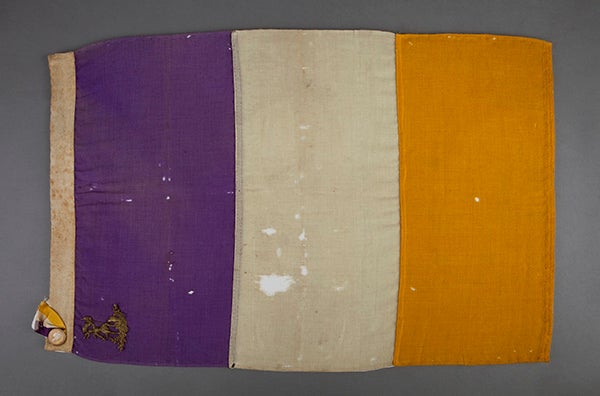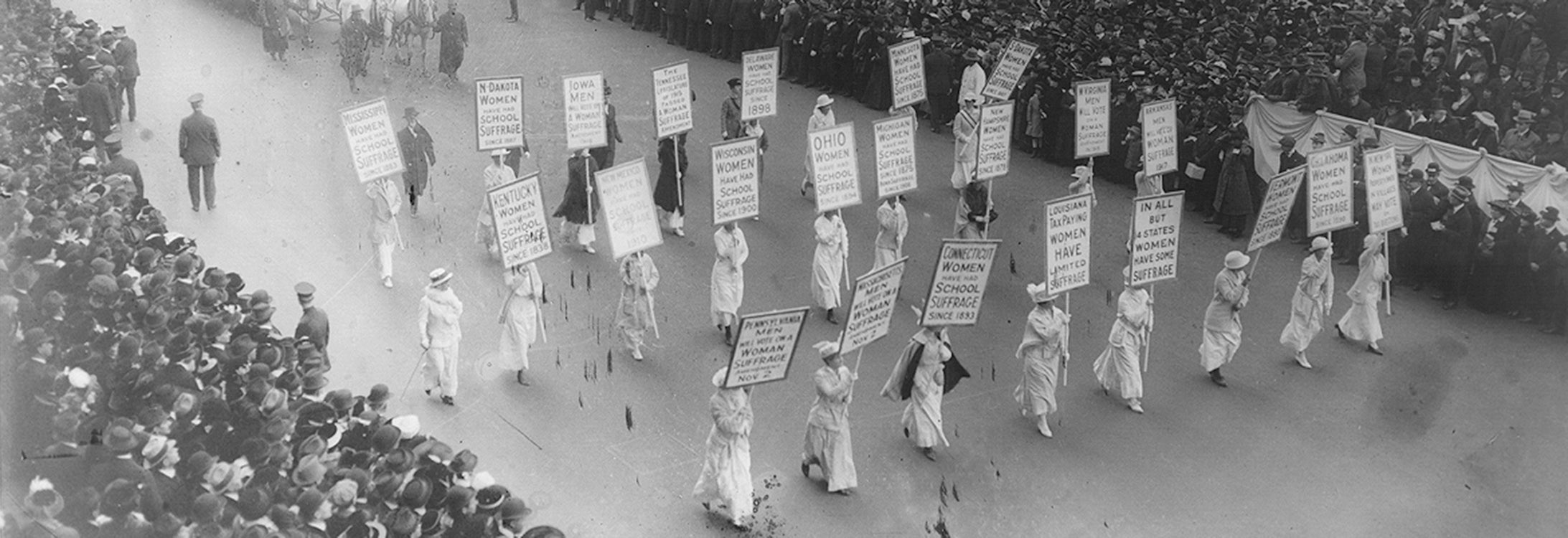SUFFRAGE AT 100
Celebrating the anniversary of women’s right to vote
One hundred years ago, the ratification of the 19th Amendment extended the right to vote to women in the United States. The story of the women who fought for the vote is a story of defiant protests, marches and court battles to secure their full civic participation. In the 1872 presidential election, the pioneering suffragist Susan B. Anthony was arrested for trying to cast a ballot illegally.
“It’s hard to believe that there was a time when more than half of the electorate wasn’t allowed to vote. The story behind that fight is a really big part of American history,” said Dr. Peter Francia, a political science professor teaching a class on protest movements this fall.
And as always, there is more to the story than most people realize. Here’s how East Carolina University professors from various fields approach teaching the suffrage movement and some key takeaways they have for students.
Visit YouTube for the closed-captioned version of this video.

The flag of the National Women Suffrage Congressional Union, later renamed the National Women’s Party. (Courtesy of the National Museum of American History)
DID YOU KNOW?
The suffragists were loyal and bold, too
While most people have seen photos of women wearing white at suffrage protests and marches, there were other colors women used to symbolize the movement – like purple and gold. The National Women’s Party, founded by Alice Paul, used a flag with white, purple and gold.
According to The Suffragist, a weekly newspaper published by the organization, “Purple is the color of loyalty, constancy to purpose, unswerving steadfastness to a cause. White, the emblem of purity, symbolizes the quality of our purpose; and gold, the color of light and life, is as the torch that guides our purpose, pure and unswerving.”
suffrage (n)
- the right to vote in political elections
The women’s suffrage movement took a long time.
The fight for the right to vote began decades before the 19th Amendment was ratified. Many scholars peg the start of the movement to the Seneca Falls Convention in 1848. There, 68 women and 32 men signed the Declaration of Sentiments, a document that outlined grievances and set the agenda for the suffrage movement. Progress after that was patchwork rather than linear, with some states granting women the right to vote before others.
“Sociologists look at why some states granted suffrage and others didn’t. I like students to think of the suffrage movement as a longer movement — a state-by-state battle as well as a federal movement,” said Melinda Kane, a sociology professor and gender studies program coordinator.
There were arguments and factions among leaders about the best way to get the vote.
The idea of women voting was controversial at the time, and not everyone involved in the movement agreed on how best to reach their goal.
Some suffragist leaders, like Alice Paul, argued that women were equal to men and therefore deserved to vote, and that the movement needed to be disruptive to garner attention. Paul spent months picketing the White House and enduring verbal and physical attacks from spectators.
More moderate suffragists believed working within the status quo would be more effective, Kane said. “They used the idea of men and women having separate spheres — that women should vote to be able to continue making good decisions for the home.”
In Dr. Karin Zipf’s Women in American History class, students staged a virtual debate about the amendment in which they assumed the personality and ideas of assigned characters for and against women’s right to vote. The pro-suffrage students embodied activists like Carrie Chapman Catt and Ida B. Wells, who fought for a federal amendment to give women a voice in politics. The “antis” staunchly disagreed on the grounds that women were more influential outside of politics, and that a federal vote would threaten white supremacy. The exercise got students thinking about what the arguments of the time period were and how they were used.
As Kane reminds us, people tend to look back on protest movements with rose-colored glasses. “If the movement is successful, people say, ‘Oh of course I would have been on the side of that change,’ as opposed to recognizing that no, it was highly contested,” she said.
The 19th Amendment didn’t give all women the right to vote.
While the amendment was the single largest act of enfranchisement in American history, it did not extend voting rights to all women. Many Native women were not considered citizens and therefore could not vote, and Black and Latina women still faced intimidation and voter suppression tactics at the polls.
“We know the big figures, like Susan B. Anthony and Elizabeth Cady Stanton, who are white women,” said Kirstin Squint, the 2019-2020 Whichard Visiting Distinguished Professor in the Humanities. In her Introduction to Gender Studies class, Squint wants students to understand Black and Native women’s roles in the suffrage movement. “There were coalitions of women from different ethnic backgrounds” who were also fighting for suffrage, she said.
On Oct. 21, Squint will host a virtual presentation with author Dr. Cathleen Cahill, who will discuss her forthcoming book, “Recasting the Vote: How Women of Color Transformed the Suffrage Movement.” The lecture and following Q&A session will cover stories of multiracial heroines largely ignored in earlier suffrage histories.
What the suffragists fought for is still relevant today.
“I don’t think we have equality yet. We’ve made a lot of gains and the incredible number of women who have run for office recently is a really heartening trend that I hope keeps happening,” Squint said. “In the 2016 election, a woman came very close to winning the presidency, and this election we have an African American woman as a VP candidate. That’s something the suffragists would be happy about.”
The suffrage movement isn’t so different from current protests. “There’s a long history of protest in the U.S. Literally, the founding of the country begins with a protest of King George III. Many of these movements share similar tactics, like economic boycotts and marches,” Francia said. “The history of protest lives on.”
EVENTS
Oct. 7
Join the Center for Leadership and Civic Engagement and the Women and Gender Office at 3 p.m. Oct. 7 for a virtual celebration of the 100th anniversary of the passage of the 19th Amendment. The event will feature special guest Dianna Wynn, president of the League of Women Voters of Wake County, and clips from the HBO film “Iron Jawed Angels.” This virtual event will be held on Microsoft Teams. Visit the Pirates Vote page on Engage for more information.
Oct. 21
Whichard Visiting Distinguished Professor in the Humanities Kirstin Squint will host a virtual presentation at 7 p.m. Oct. 21 with Dr. Cathleen Cahill, who will discuss her forthcoming book, “Recasting the Vote: How Women of Color Transformed the Suffrage Movement.” The Department of English and the Gender Studies Program are co-hosts of the Whichard Chair this academic year.
